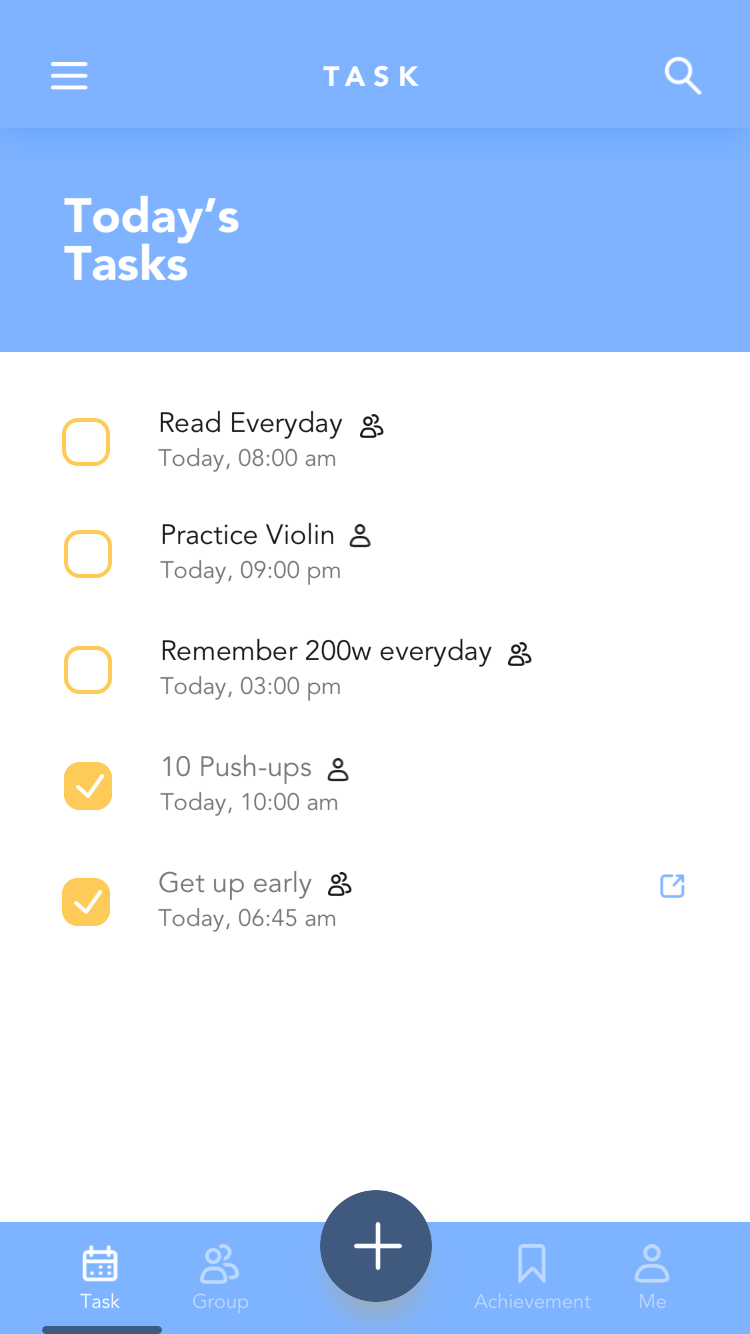Ideation

We aimed to generate as many unique ideas as possible at the first stage of ideation. Over the course of several ideation sessions, we produced nearly 150 ideas. To guide us through this process, we used various ideation methods, such as Individual Ideation, Brainstorming & Flash Cards, Concept Sorting, and Diverging, in order to raise solution about our design question from different perspectives.
Concept Refinement
We conducted two concept refinement sessions in order to select the most promising solutions. The first session resulted in six concepts, while the second round of refinement filtered them until three possible concepts were left.
Remote task supervising application
Using smartphones as devices to record the process of habit forming or plan to execute and inviting friends with similar goals as supervisors. They can remotely examine each other's task records every day to make sure the execution of tasks. Failures of doing daily tasks will result in punishments.
Virtual reality co-operating system
Designing and building a VR society, allowing students to communicate and exchange feelings regularly with their friends who own similar goals. In this way, they may develop an immersive feeling that their friends are doing the same tasks with them. Members could set rules in the VR society, which can serve as punishments and awards.
Online multi-task virtual classroom
Establishing virtual classrooms, with monitors supervising the members of completing their daily tasks. Each classroom focuses on a specific kind of task. The class only consists of members who are familiar with each other.
Final Concept
Having chosen to develop the first idea, we decided to name the product as COGO, which meant partners with similar goals could work together. COGO, as a mobile application, helps college students to form and maintain beneficial habits as well as to better execute their plans.
We exploited friends' supervision and other external mechanisms such as punishments and awards in order to motivate students to perform daily tasks. The final design concept borrows the strongest aspects from many of our former concepts and combines them into a solution that uses the group task form, friends' remote daily supervision, and customized punishments to effectively address our design question.




































